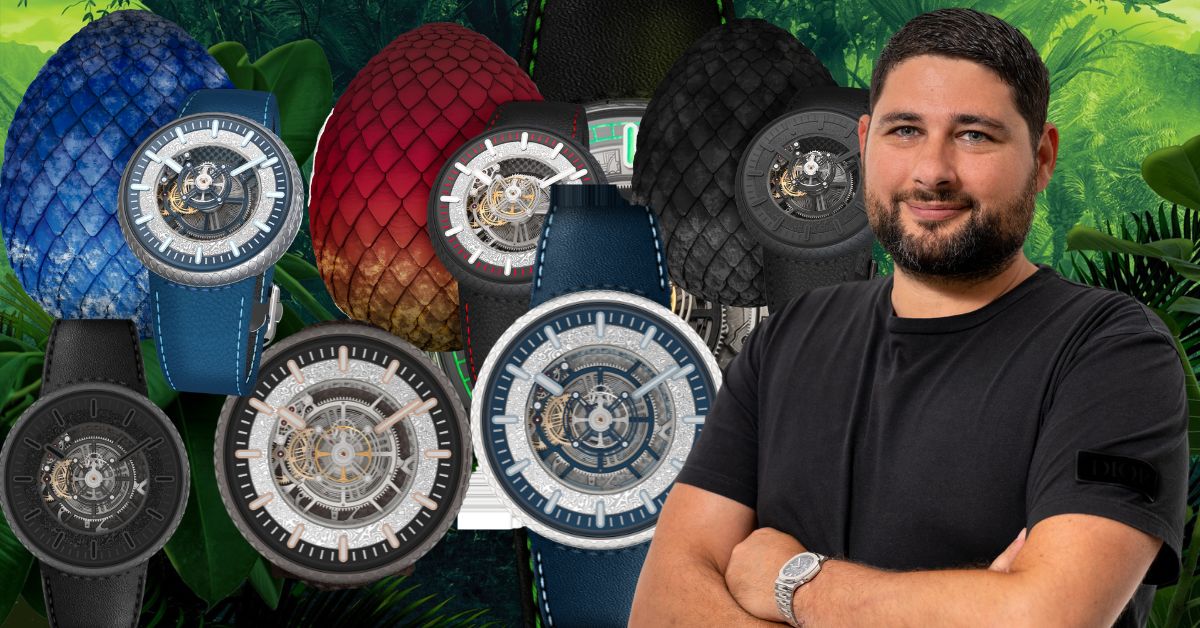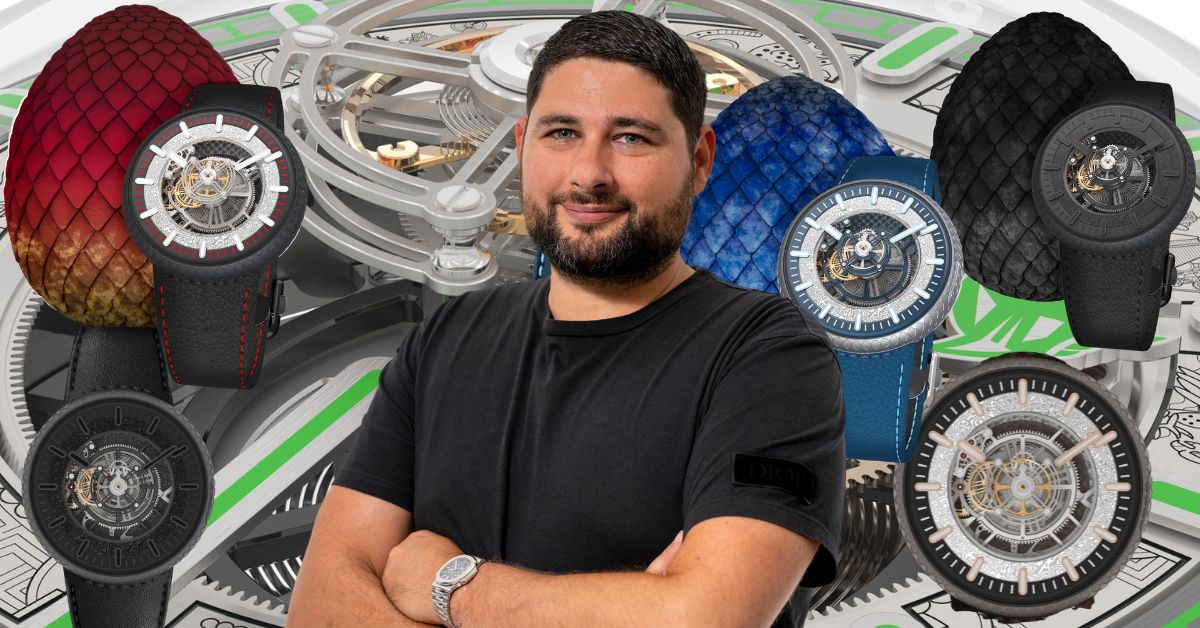Zurich, Switzerland – In March 2020, when the world was in the midst of a global pandemic that forced businesses to layoff their staff, slash salaries and even close their doors, the opposite was happening for a new independent watchmaking studio in Switzerland. Marco Tedeschi, Hublot’s former Regional Director, Middle East and Africa, started Kross Studio with a small team of highly skilled watchmakers and creative designers – just two weeks before going into lockdown.
Despite the risky timing, his unique high-end horology brand flourished from the beginning, thanks to a unique design, which has already become synonymous with the brand, and some key brand deals unlike anything seen in the luxury watch market.
As a bespoke design workshop Kross Studio has helped revolutionise high-end timepieces with its central tourbillon – a mechanical mechanism placed in the middle of the dial – and the patented central ‘floating’ tourbillon that sits on top of the watch’s movement, a unique concept in the horology world.
“My initial idea was not to have a central tourbillon, the concept was to have a longer lasting power reserve by moving the hands from the centre of the dial. Then there was no space to have the regulator, so I added it on top,” Tedeschi tells TRENDS. “So now I have a big barrel and a tourbillon on top and the only place I can display the time is around the tourbillon, which is why I created the peripheral display that works as a satellite mechanism.”
“Thanks to this innovative construction, which has nothing to do with traditional movement, we came out with the central tourbillon,” he adds.
Having grown up in Geneva, Tedeschi spent much of his youth in his father’s watch and jewellery boutique, which exposed him to centuries old, traditional, watchmaking methods. However, as an eighties child he also grew up in the information age of technology and now tries to incorporate modern technology in his bespoke designs as much as possible.

“In the 18th century our movement would’ve been impossible because of the ball bearings and other parts that didn’t exist. So we have something traditional that uses newer technology, giving us something unique,” he says.
As the threat of a global recession edges ever closer, the watchmaking industry is continuing to thrive, which itself is bringing a different set of challenges, most notably the demand for parts.
“The lack of production capacity is a problem,” admits Tedeschi.
The effects of COVID-19 are still being felt in the industry with suppliers struggling to keep up with orders from luxury watch brands, and as a small independent company making forty pieces a year Kross Studio finds itself waiting longer for parts than more established brands.
“It’s still taking time to get back to the levels we had in 2019,” says the Kross Studio founder. “That’s the biggest problem for us, having the same supplier as Rolex and we make less watches so we don’t have the same priority for suppliers because they focus on those with larger production.”
Despite being down the pecking order for suppliers, Tedeschi doesn’t consider the heavy-hitters such as LVMH, Richemont or Swatch as direct competition.
“Our product is so different to the rest of the market, we don’t have much competition amongst the big groups. Audemars Piguet has a partnership with Marvel, but that is good news for us because it shows that there is a market and an interest for these types of collaborations.”
High demand for brand partnership timepieces is what Kross Studio has built its reputation on. It has already worked with Lucasfilm on a ground-breaking Star Wars collection, which was the first in a string of big name collaborations. Others include Game of Thrones, DC Comics, Hasbro and Warner Bros all of which have helped put Tedeschi’s brand on the map.
“I really wanted to blend horology with something new and something different. I didn’t want to be another watch brand that has sports ambassadors and I have always been a fan of giant franchises, like Star Wars, that have their own universes because they’re so influential,” he says.
The Star Wars partnership came just months after the Kross Studios doors opened and resulted in a 10-piece Death Star Ultimate Collector Set with a Death Star Tourbillon and authentic kyber crystal movie prop from Rogue One: A Star Wars Story, making the timepieces highly desirable for Star Wars fans and watch collectors alike.
Collectors will have to part with at least $90,000 to own a Kross Studio piece with prices going up to $150,000, something that buyers in the Middle East are fine with. Tedeschi counts the Middle Eastern watch market as one of his most lucrative with collectors in the region keen to own one of his unique designs.
“People are really knowledgeable in the Middle East and they are ready for the product we create. In less mature markets independent watch studios don’t rise up as quickly because you have to explain the price point of the product a lot more, whereas here it’s understood,” Tedeschi says. “The Middle East is among our top five markets but there is a lot more for us to develop, especially on the corporate side, which this market loves.”
With five collaborations under its belt and plenty more coming to the table, the Kross Studio team of 12 – which will increase to 15 by the end of the year – are having to turn down offers from other high profile franchises looking to be immortalised as a luxury timepiece. For now the focus remains on quality over quantity, which is already near perfection thanks to the introduction of 3D printers.
“We are building on traditional processes but also using new technology, such as 3D printing because it’s must faster and more accurate than being done by hand. We 3D print the part that holds the watch piece because to have a satin finish you need to have proper alignment,” Tedeschi explains. “So you need a part holder that is printed in a certain position to be able to have the satin finish aligned perfectly with the shape of the part. We can increase the precision because when it’d done by hand there’s some margin of error but not with the 3D printer.”
The artistic creativity fused with classic watchmaking techniques is what’s enabled the former Hublot director to carve his niche in the industry, and with an expanding team and collaboration requests from major brands already on the table for next year, Kross Studio is starting a trend of its own.









